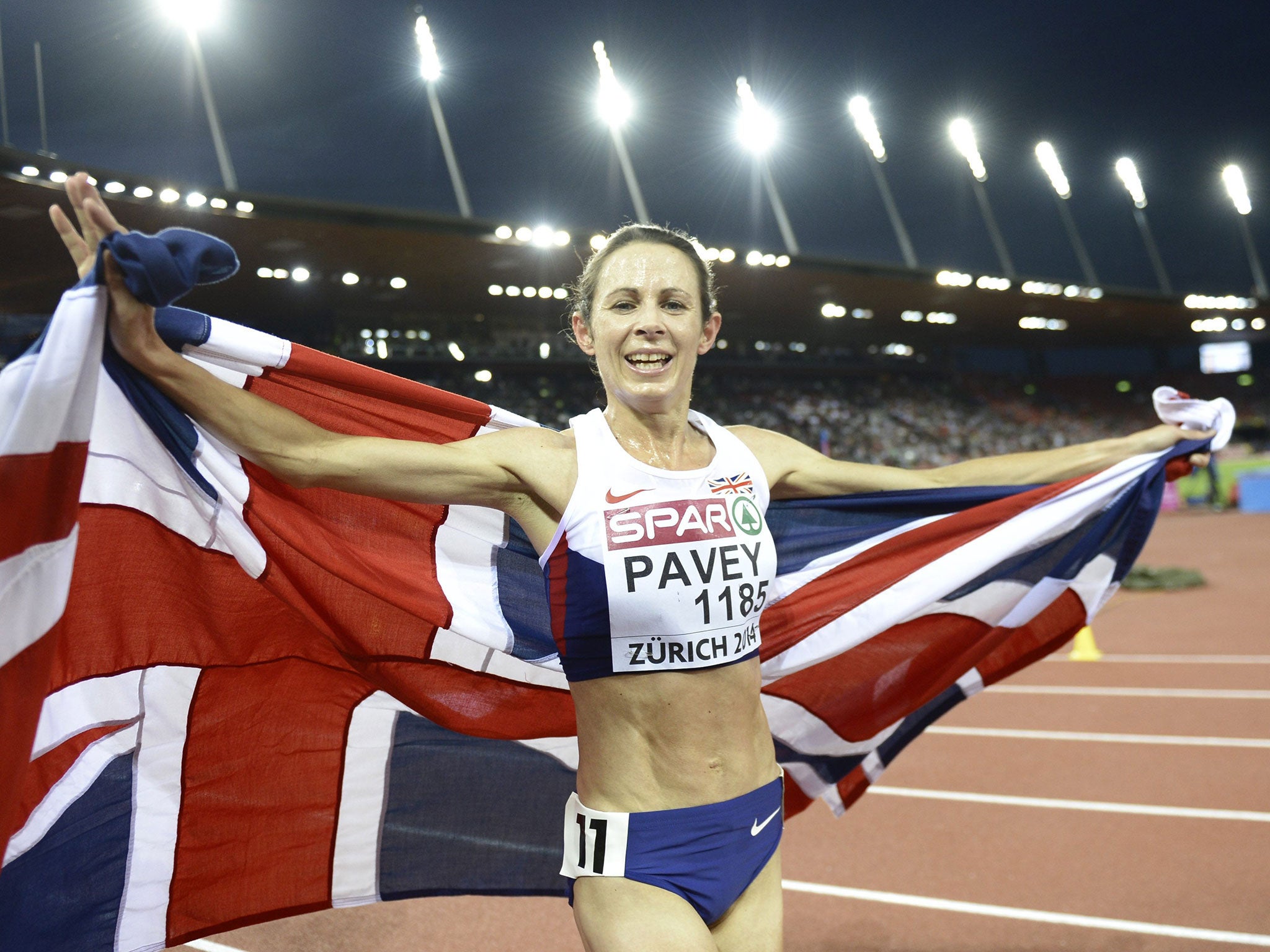Jo Pavey gold medal: The science of her long-distance success

Your support helps us to tell the story
From reproductive rights to climate change to Big Tech, The Independent is on the ground when the story is developing. Whether it's investigating the financials of Elon Musk's pro-Trump PAC or producing our latest documentary, 'The A Word', which shines a light on the American women fighting for reproductive rights, we know how important it is to parse out the facts from the messaging.
At such a critical moment in US history, we need reporters on the ground. Your donation allows us to keep sending journalists to speak to both sides of the story.
The Independent is trusted by Americans across the entire political spectrum. And unlike many other quality news outlets, we choose not to lock Americans out of our reporting and analysis with paywalls. We believe quality journalism should be available to everyone, paid for by those who can afford it.
Your support makes all the difference.Just weeks away from her 41st birthday, we could have forgiven Jo Pavey, a mother of two young children, for hanging up her running shoes and switching to life in the slow lane.
But on Tuesday night, after 17 years in top-flight athletics, Ms Pavey demonstrated the power of experience over youth by winning the 10,000 metres at the European Athletics Championship in Zurich – the oldest woman to win gold in the history of these events.
“I just can’t believe it. I really enjoyed it but I’m really surprised. It’s quite funny to try for so many years and now to do it when I’m 40. I should have learnt a few things a while ago,” Ms Pavey said after the race.
By any standard, it was a remarkable achievement, not least because her youngest baby is just 11 months old and she only stopped breast feeding him a few months ago. How could a 40-year-old mother with two maternity leaves on her CV have outpaced Europe’s finest long-distance runners?
“The fact that she’s an endurance athlete must have been a key component,” said Professor Steve Haake, director of the Centre for Sports Engineering Research at Sheffield Hallam University.
“Younger athletes have the advantage in terms of strength and speed over short distances, which is why so many runners switch to longer distances as they get older where it’s more about endurance,” Professor Haake said.
One unavoidable fact about any high-energy sport is that it gets more difficult the older you get. It mostly comes down to the inevitable decline in the maximum amount of oxygen the body can take in – something called VO2max.
Studies have shown that this decline usually begins after the age of 35 and although training can slow down the rate of deterioration, it cannot stop it completely.
Research on elite older runners who undergo heavy training has found that they still have a VO2max that is about 10 per cent lower than comparable athletes of a younger age.
Ageing causes several changes in the body that affect athletic performance. The heart for instance undergoes structural and functional alterations which cause it to be less efficient at pumping blood around the lungs and muscles.
Getting oxygen to the muscles of the body of a long-distance runner is crucial because in the absence of oxygen, levels of lactic acid build up as the cells switch from aerobic to anaerobic respiration – the process of breaking down glucose to release energy.
Older athletes are often better at managing the build-up of the lactate ion in muscles, which causes pain and eventually cramps. One study of older elite runners in their 50s, for instance, found that their muscles worked closer to their maximum VO2 levels for the duration of a race compared to younger runners – which helped to limit the build-up of lactate.
Ms Pavey would have been in pain towards the end of the race as her lactate levels began to rise. But it was how she handled the last 100 metres, and the final challenge from Frenchwoman Clemence Calvin, 24, that clinched her gold medal.
“At that point it comes down to your psychological profile. You can run at high lactate levels, but it’s incredibly hard to do. Jo had the experience to know exactly what she had to do when the French girl tried to pass her,” Professor Haake said.
“The fact that her husband, Gavin, is her coach means that she has incredible support even when she is away from the training field,” he said.
The support of her husband and coach is something that Ms Pavey herself acknowledged: “We can be flexible and fit the running around the family,” she said.
“People think I need to be organised, but it is often the opposite. I sometimes end up going for my run in the middle of the afternoon. The kids’ activities come first,” she explained.
Join our commenting forum
Join thought-provoking conversations, follow other Independent readers and see their replies
Comments